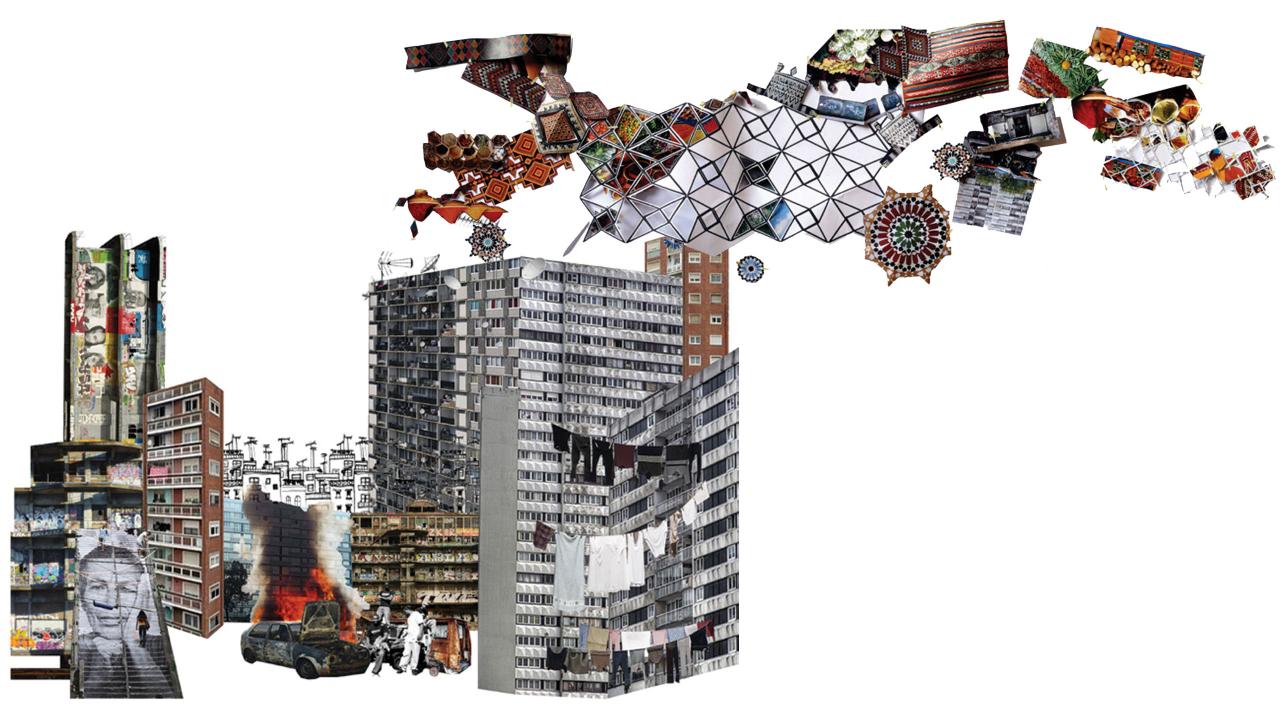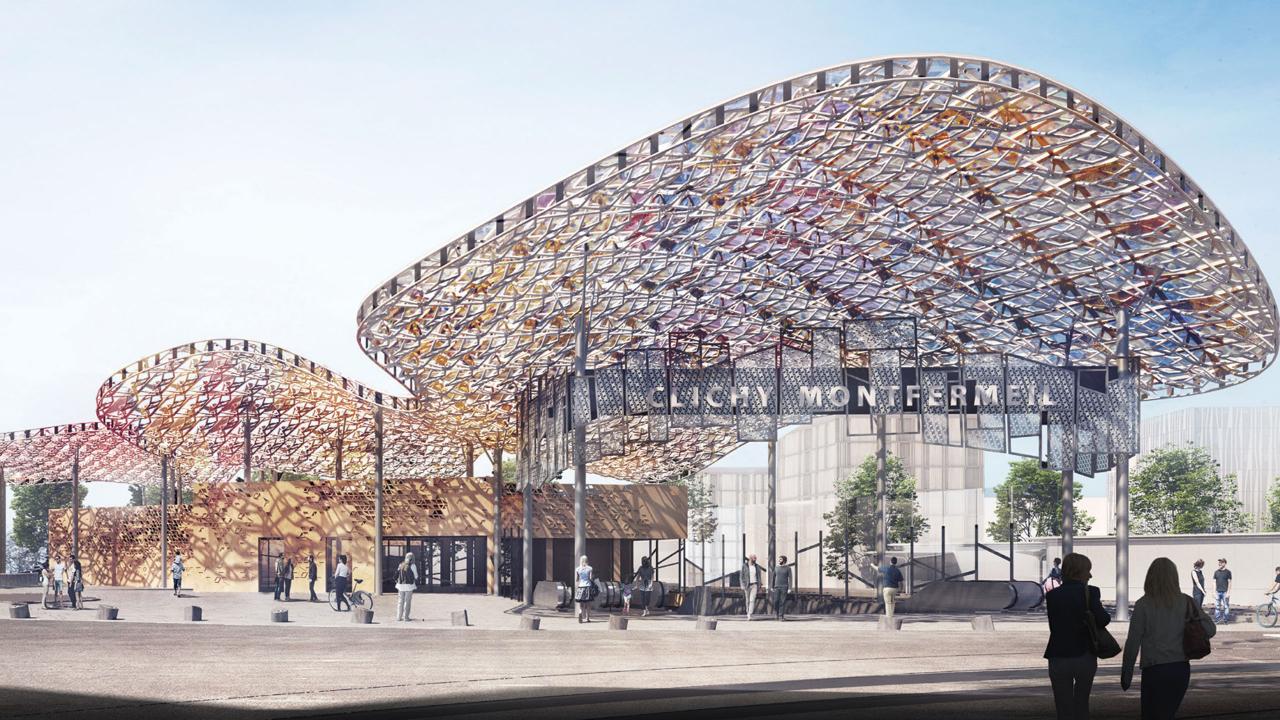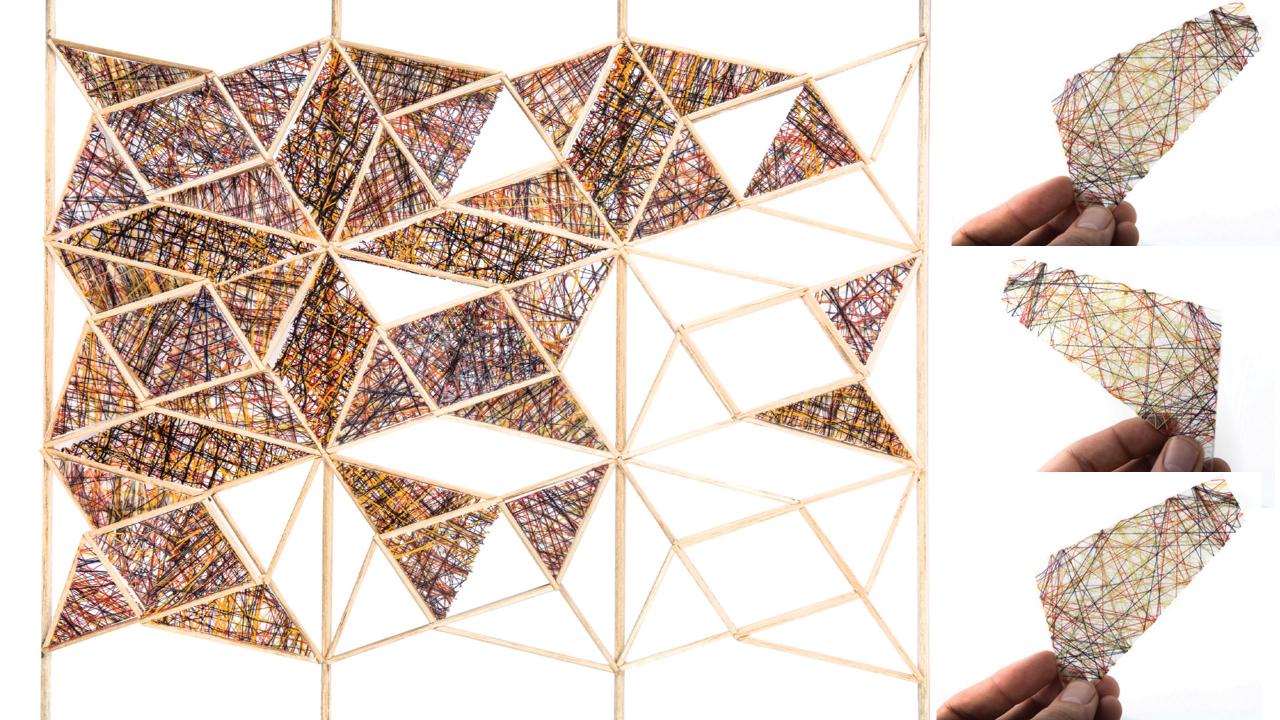DESIGN PROCESS
Weaving Architecture summarises a way of thinking stemming from Benedetta Tagliabue and EMBT's experimental work through the years, starting with the wicker Spanish Pavilion of Expo 2010 Shanghai.
Progressing now in Clichy-sous-Bois and Montfermeil (in the outskirts of Paris) with the design of a metro station (part of the Grand Paris Express), a marketplace, an urban renewal, which will be built with fibers, a delicate material resistant through time and climate.
Weaving Architecture, at La Biennale, deals with the concept of weaving at different scales: weaving the city through its metro, weaving activities of people in the public space, weaving the structure of the canopy to dress it with fiber fabrics.
The canopy provides protection and shade, creating a comfortable, semi-open space for various communal activities. Its colourful nature expresses the spirit of Clichy-sous-Bois and Montfermeil by recalling patterns of African traditional clothing as well as local graffiti - an artwork owned by the people.
This architecture, like the infrastructure it represents, links territories and builds a sense of social inclusion by manifesting architecture’s social role.
Two years ago, Benedetta embarked on a journey with the American Hardwood Export Council to demonstrate the potential of underused species, which despite growing abundantly in the forests are being underused because they are not in fashion. This journey started with The Workshop of Dreams, where she teamed up with Pritzker Prize Director Martha Thorne to create a series of coffee tables made in sustainable U.S. hardwoods. It continued with Too Good to Waste, an installation presented at Milan Design Week 2017, which opened up a dialogue about the need to use all the different species that the forests produce in order to achieve real sustainability.
That’s why when thinking about the material for Weaving architecture American red oak was an obvious choice for EMBT. Thanks to those two projects, they had previous experience with this beautiful timber and were aware of its outstanding environmental properties.



